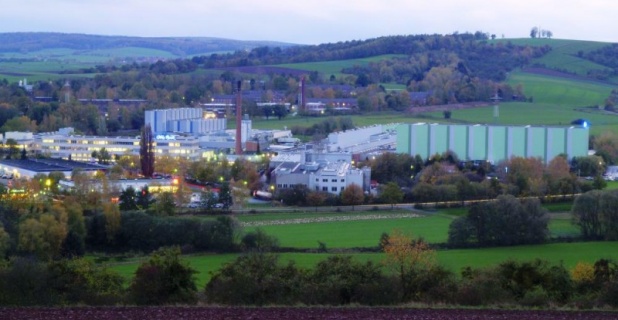Energy supply for the Otto Bock group of companies has always meant implementing the latest, state-of-the-art technologies. As such, saving of energy and in-house generation of electricity and heating in an environmentally friendly way has been the subject of constant improvement. Indeed the company was recently honoured with the B.A.U.M environment award for exemplary energy man-agement at the largest manufacturing location in Duderstadt. The company headquarters, housing some 1,400 of a total of 3,686 em-ployees, is the location of not only the core sectors plastics and information and communication technology, but also of the largest development and manufacturing facility of Otto Bock HealthCare, a global leader in the area of orthopaedics and rehabilitation technology.
The Duderstadt headquarters is the perfect example of how ecology and economics can be optimally combined, and is a prime example of how Germany as a location for production and technology is fit for the future. 25 million euros was invested by the Group in 2007, much of which was used for the modernisation of existing buildings and facilities. As part of this, energy optimisation plays a vital role.
As part of a first construction phase for Otto Bock Healthcare, parts of the manufacturing facilities and an office building for were modernised. This included the complete renewal of lighting installations, without actually changing the lighting concept – this still proved to be coherent. In addition nearly all rooms, including offices, corridors, rest rooms and storage rooms, received lighting control with light sensors and/or presence detectors for daylight-dependent and us-age-dependent illumination. Together with modern T5 lamps and electronic control gear this offered a maximum of energy conserva-tion potential. Because the level of lighting has not been altered, savings in relation to conditions before are directly comparable. The solution implemented by Regiolux with modern lighting technology and lighting control via light and presence sensors with daylight and usage dependency achieves energy savings of 45% compared to before.
Within the offices the old recessed luminaires (2/36 W) with metal louvres and conventional control gear were exchanged throughout for modern T5 recessed luminaires with electronic control gear: Regiolux recessed luminaires for three ceiling systems featuring individual louvres for each lamp. For office spaces with DSE workstations the version RSED (2/28 W) with darklight louvre was installed, and for assembly rooms and laboratories the RME version (2/28 W) with metal louvre was implemented. Both versions are dimmable and feature lighting control via presence and daylight sensors.
With luminaires situated further within the building, for example for social and conference rooms, lighting control occurs via presence detectors. The larger office spaces were equipped with special presence detectors with two dimming outputs (1-10 V) serving as separate control channels (1 and 2). Both directed light sensors measure brightness simultaneously in two different room zones and compare these values with the saved brightness switching value. This means that the luminaires are assigned to two groups that are each controlled separately.
Before modernisation, the manufacturing areas were equipped with continuous runs featuring cross-blade louvres and conventional control gear, and without lighting control. Regiolux replaced these throughout with modern continuous runs of the SDT rapid-installation mounting system, with dimmable electronic control gear (1-10V) and lighting control (LC-A VH + LC-ASL100). In addition, RMA (2/35 W) surface mounted luminaires, also with electronic control gear, were installed. Because employees work in the manufacturing areas on a shiftwork basis, presence detectors were not needed.
The new lighting installation does not only contribute to a reduction of energy consumption, thus aiding environment protection; with the savings in energy costs, cost-effectiveness as a whole is increased. Good light for workstations of course ultimately has the same effect.








